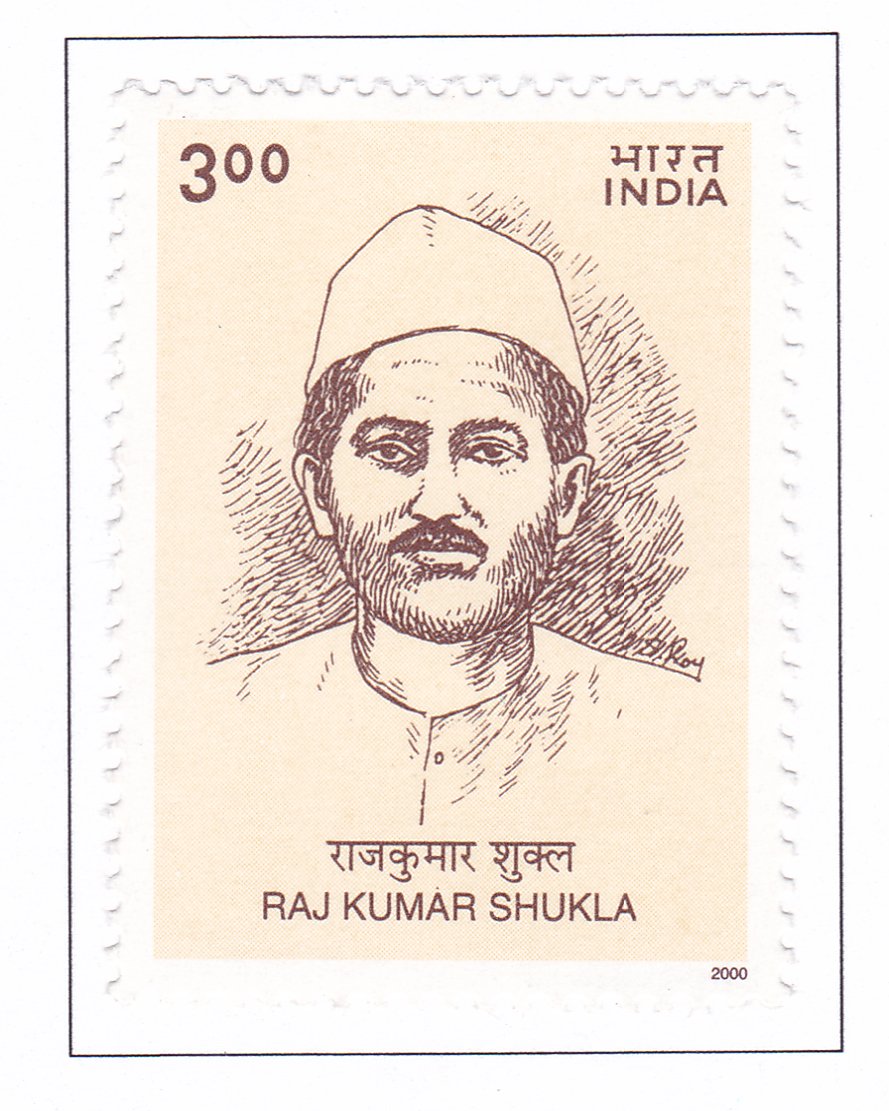Raj Kumar Shukla (1875-1929)

Technical Data
| Date of Issue | October 16, 2000 |
|---|---|
| Denomination | Rs. 3 |
| Quantity | 100,000 |
| Perforation | comb 13 |
| Printer | Calcutta Security Printers Ltd |
| Watermark | No Watermark |
| Colors | Buff | Chocolate |
| Catalog Codes |
Michel IN 1791 Stamp Number IN 1854 Yvert et Tellier IN 1557 Stanley Gibbons IN 1960 |
| Themes | Anniversaries and Jubilees | Famous people | Headgear | Men | Reformers |
Table of Contents
Commemorative Stamp Set: Raj Kumar Shukla
Design Elements:
- Portrait of Raj Kumar Shukla: The stamp features a dignified portrait of Raj Kumar Shukla, highlighting his determined and resolute character.
- Motihari Landscape: The background includes elements representing Motihari, symbolizing the setting of the Champaran Satyagraha.
- Indigo Plant: A subtle depiction of the indigo plant is included to signify the central issue of the Champaran Satyagraha.
- Historical Context: Elements representing Gandhiji’s arrival and the Satyagraha may be included to contextualize Shukla’s role in the struggle.
Cultural and Historical Significance:
- Champaran Satyagraha: The 1917 Champaran Satyagraha was a pivotal moment in India’s struggle for independence. It marked the beginning of Gandhiji’s active involvement in the freedom movement and set a precedent for non-violent resistance.
- Role of Raj Kumar Shukla: Shukla’s persistence and courage in drawing Gandhiji’s attention to the plight of the peasants were instrumental in the success of the Satyagraha. His efforts led to the abolition of the oppressive system imposed by the indigo planters.
- Historical Impact: The successful resolution of the Champaran issue through peaceful means demonstrated the effectiveness of Gandhiji’s Satyagraha technique and helped galvanize the Indian independence movement.
Usage:
- Educational Tool: The stamp serves as an educational resource to raise awareness about the Champaran Satyagraha, Raj Kumar Shukla’s contribution, and the broader context of India’s independence struggle.
- Commemoration: It commemorates the 125th Birth Anniversary of Raj Kumar Shukla, honoring his role and contributions to India’s freedom movement.
- Philatelic Appeal: Appeals to collectors, historians, and those interested in India’s struggle for independence.
Importance of the Commemorative Stamp Set:
- Recognition of Shukla’s Contribution: Highlights Raj Kumar Shukla’s crucial role in the Champaran Satyagraha and his significant impact on India’s independence struggle.
- Historical Awareness: Enhances public knowledge about the historical events of the Champaran Satyagraha and the early phases of Gandhiji’s involvement in the independence movement.
- Cultural Heritage: Acknowledges the importance of grassroots leaders and their contributions to India’s freedom, ensuring their stories are remembered and celebrated.
Example of the Stamp Design:
- The stamp features a central portrait of Raj Kumar Shukla with historical motifs related to the Champaran Satyagraha. The background elements include representations of Motihari and the indigo plant, creating a visual narrative of the struggle and Shukla’s role in it.
The Commemorative Stamp Set Might Include:
- Portrait of Raj Kumar Shukla: Highlighting his leadership and commitment.
- Motihari Landscape: Providing context to the location of the struggle.
- Indigo Plant: Symbolizing the central issue of the Satyagraha.
Significance:
This stamp set commemorates the 125th Birth Anniversary of Raj Kumar Shukla, recognizing his vital role in the Champaran Satyagraha and his contribution to India’s fight for independence. It serves as a tribute to a pivotal figure in India’s history and helps preserve the legacy of the non-violent struggle for freedom.
